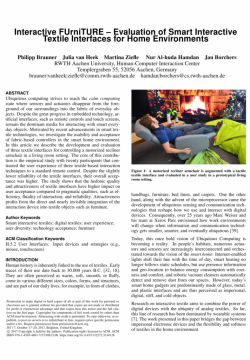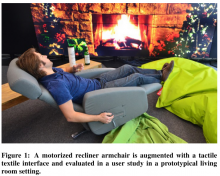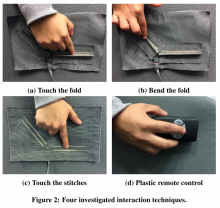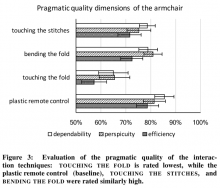
Abstract
Ubiquitous computing strives to reach the \emph{calm computing} state where sensors and actuators disappear from the foreground of our surroundings into the fabric of everyday objects. Despite the great progress in embedded technology, artificial interfaces, such as remote controls and touch screens, remain the dominant media for interacting with smart everyday objects. Motivated by recent advancements in smart textile technologies, we investigate the usability and acceptance of fabric-based controllers in the smart home environment. In this article we describe the development and evaluation of three textile interfaces for controlling a motorized recliner armchair in a living room setting. The core of this contribution is the empirical study with twenty participants that contrasted the user experience of three textile-based interaction techniques to a standard remote control. Despite the slightly lower reliability of the textile interfaces, their overall acceptance was higher. The study shows that the hedonic quality and attractiveness of textile interfaces have higher impact on user acceptance compared to pragmatic qualities, such as efficiency, fluidity of interaction, and reliability. Attractiveness profits from the direct and nearly invisible integration of the interaction device into textile objects such as furniture.
Brauner, P., van Heek, J., Ziefle, M., Hamdan, N.A., Borchers, J.: Interactive FUrniTURE – Evaluation of Smart Interactive Textile Interfaces for Home Environments. In: Proceedings of the 2017 ACM International Conference on Interactive Surfaces and Spaces. pp. 151--160. ACM Press, Brighton, England (2017).
Related Project(s):


